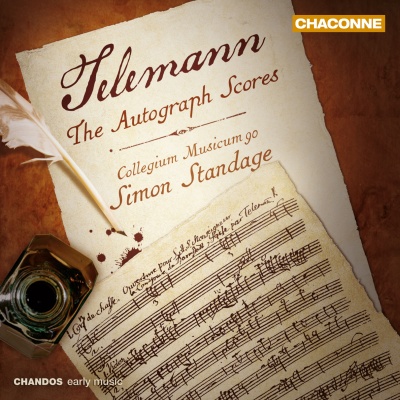
Telemann: Overtures Suites, Concerto, Fanfare & Divertimento
Review by James Manheim The "Autograph Scores" concept of this album tells the potential buyer little about the music; it denotes the fact that these pieces are among the sole works of Telemann that survive in his own handwriting. This shows how canny Telemann was as a businessman; he published so much of his music that he had little to do with such sentimentalities as preserving his autograph scores. What truly links these pieces together, and what makes them attractive, is their status as late works; Telemann wrote them in 1766, a year before his death at age 86. Unlike Bach, whose music was already considered anachronistic by the time of his death, Telemann stayed remarkably well acquainted with the latest trends. These graceful, variegated ensemble pieces are in the French style, but very much the French style of the mid-century. They are suites of dances, but the dance rhythm has somehow ceased to be the focus of the music; the texture is broken up, and when a solo instrument emerges from the small group it engages not in the terraced dynamics of the Baroque but in the melodic dialogues of what would become known as the Classical style. Whether you'll enjoy these performances has much to do with your general attitude toward the style of veteran English historical-performance violinist and conductor Simon Standage, whose silvery, restrained sound is little changed from his days with the Academy of Ancient Music. Telemann somehow seems to call for a more rhythmically bumptious style. But there's no denying that the strings of Collegium Musicum 90 have a perfectly delicate touch. Sample the second movement of the Concert en Ouverture, TWV 55:7 (track 13), and you'll have a good idea of how you'll feel about the whole. The best reason to obtain this recording may be the fact that Telemann's late music is underrepresented on recordings, and it is very interesting indeed.
